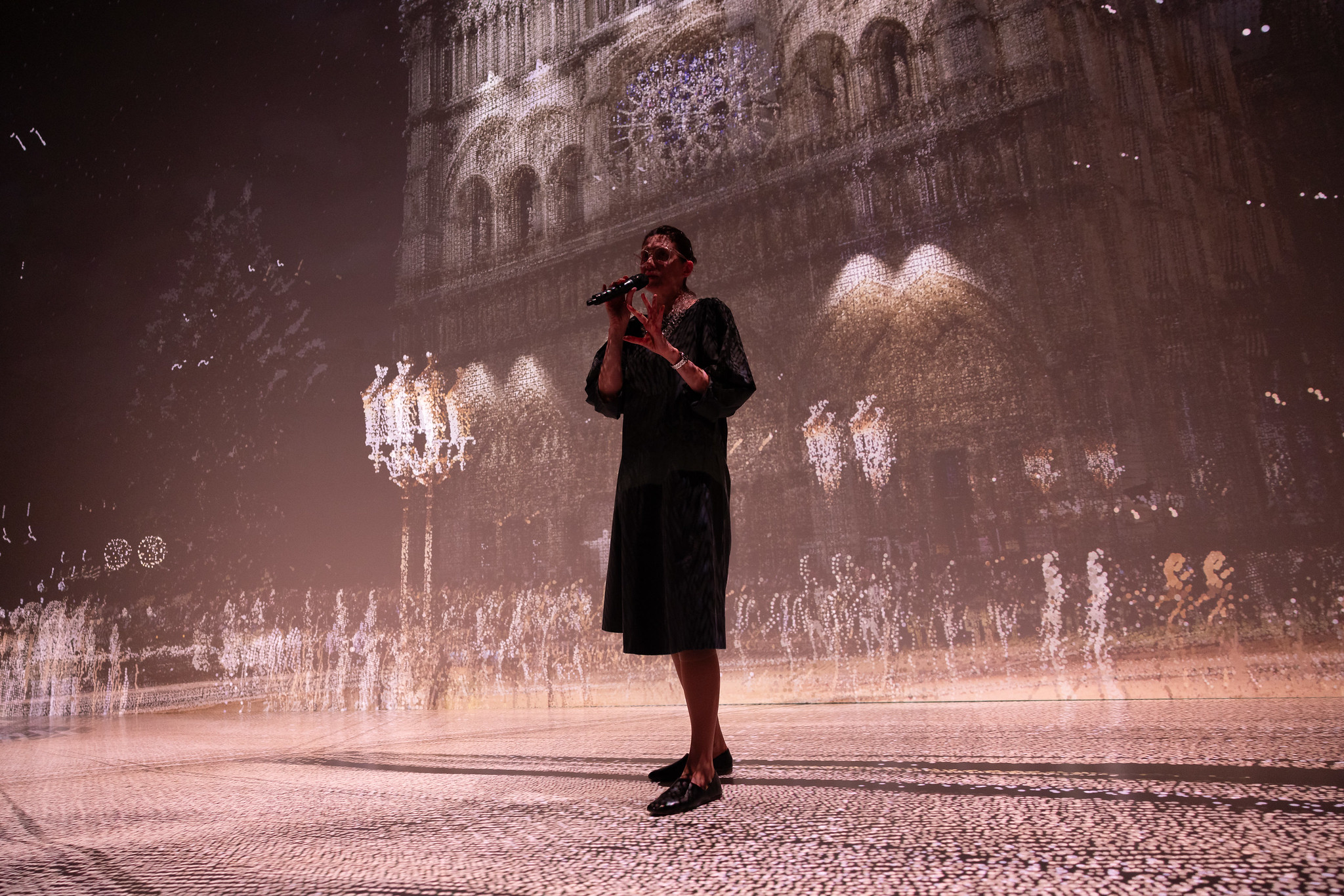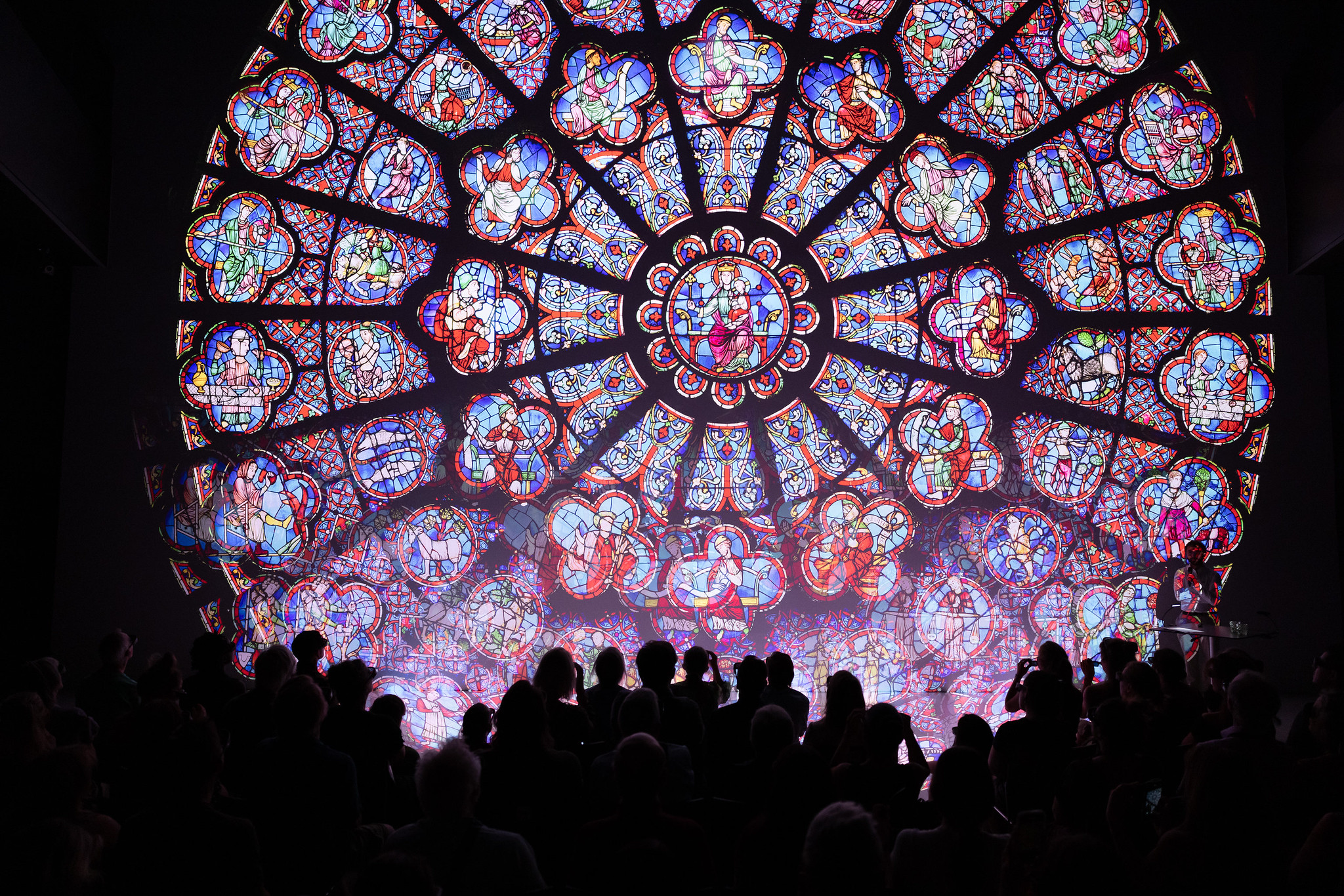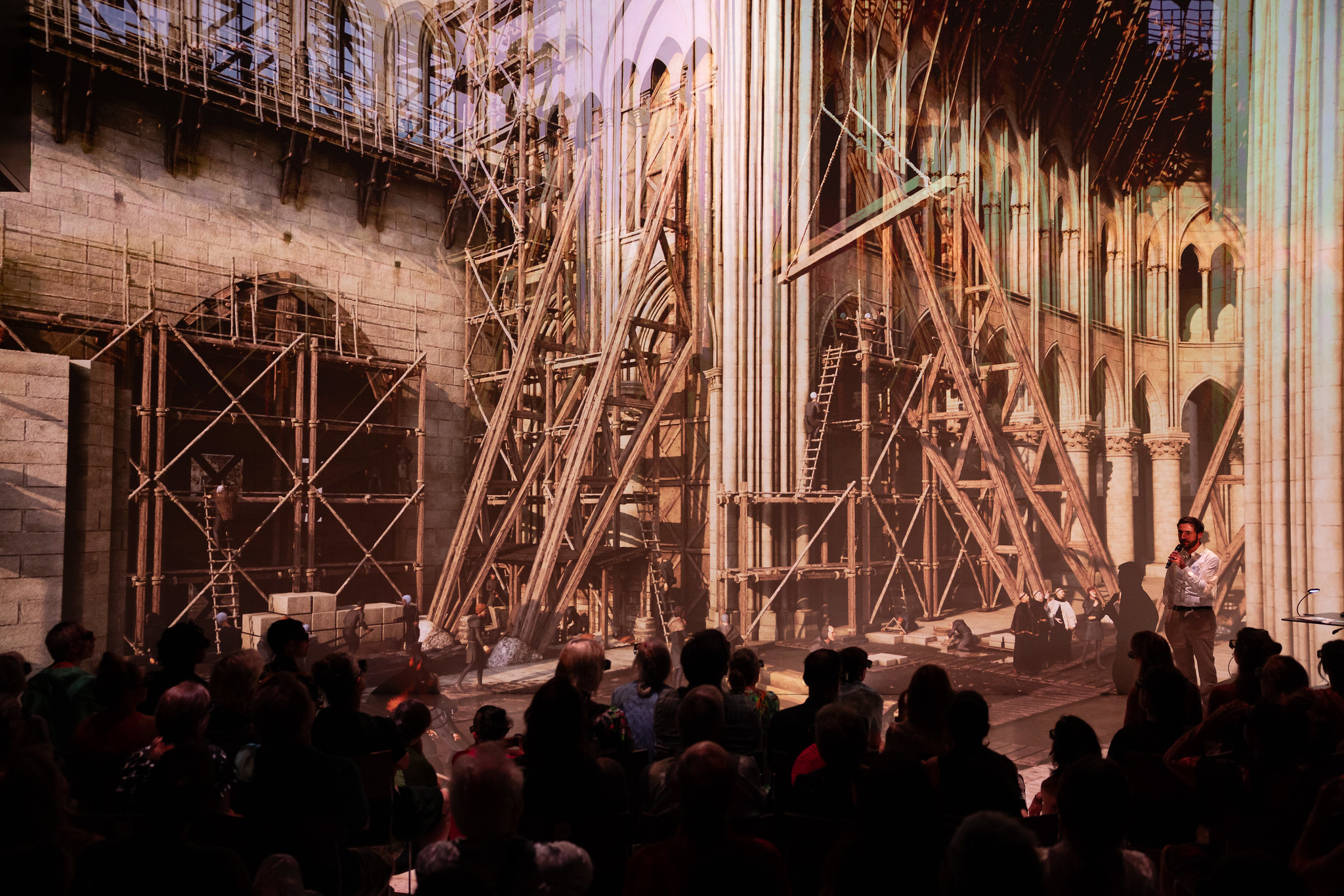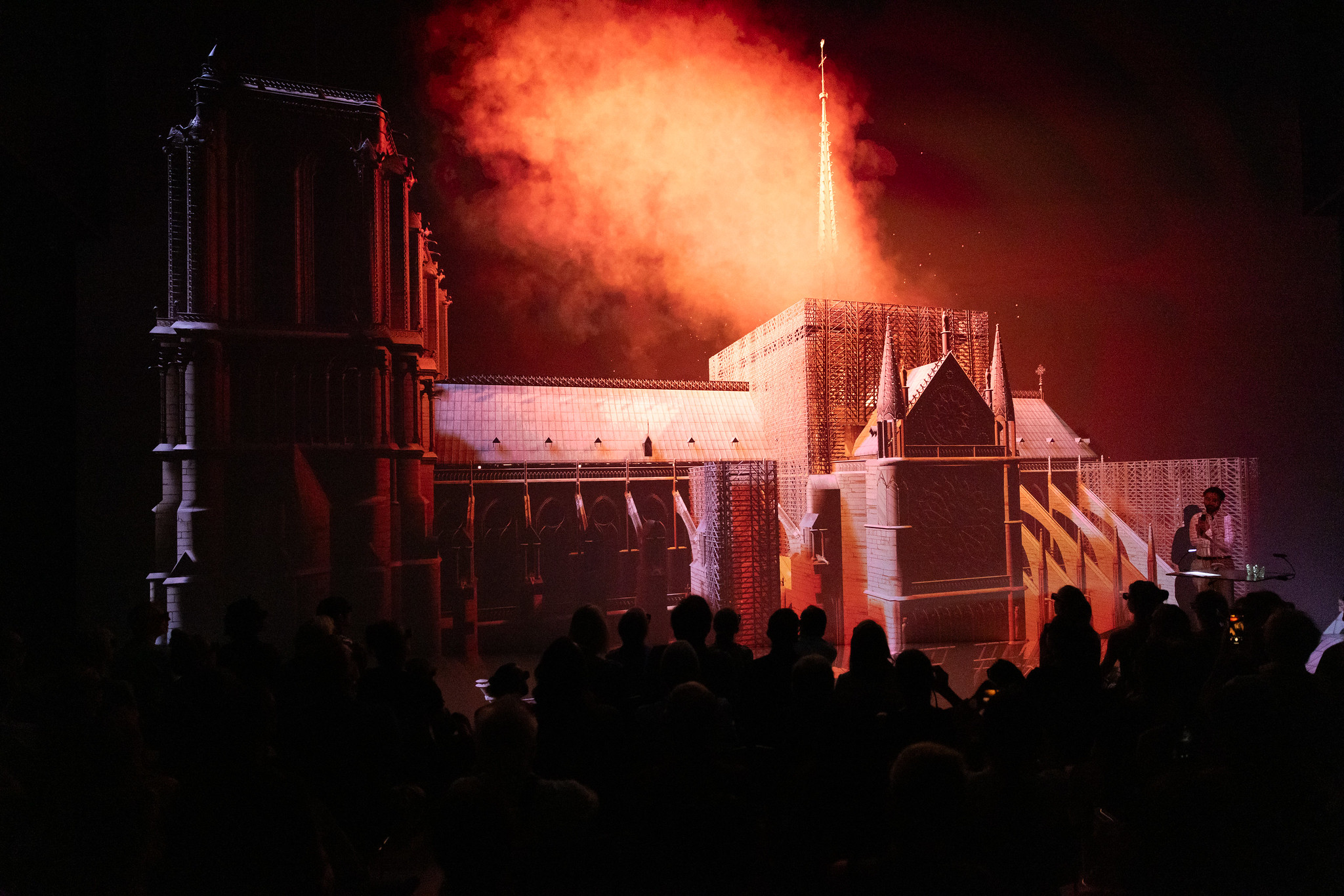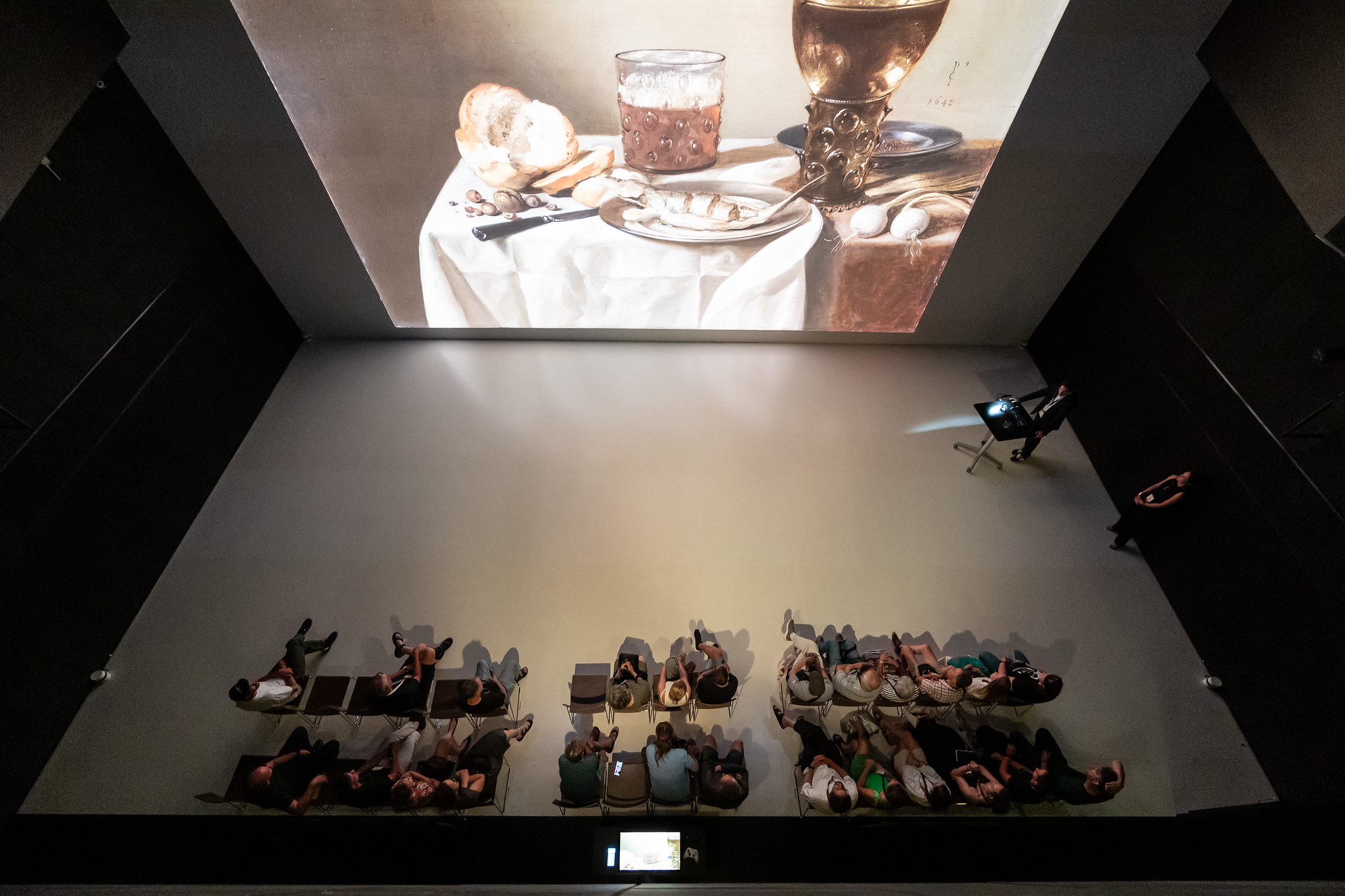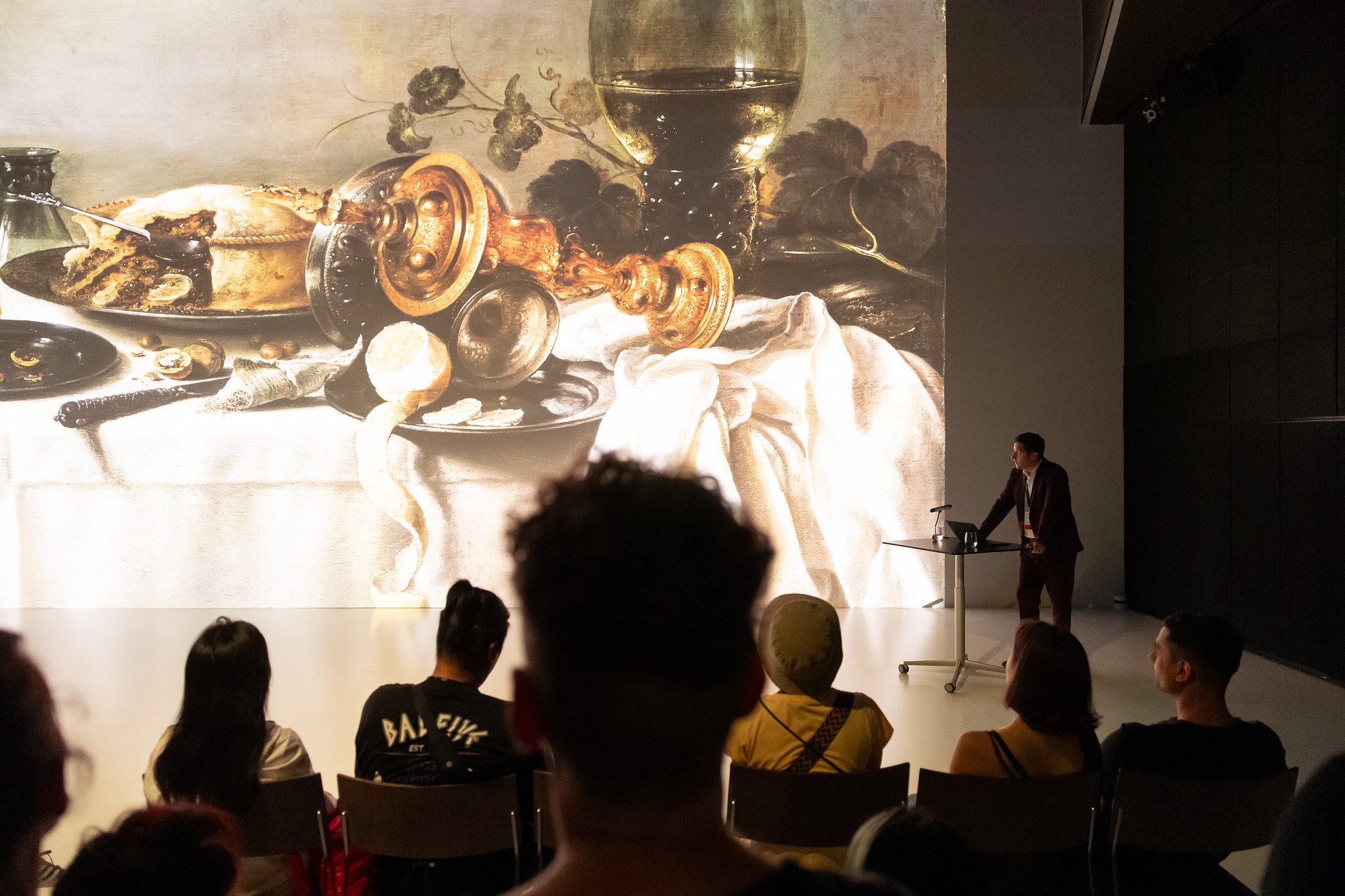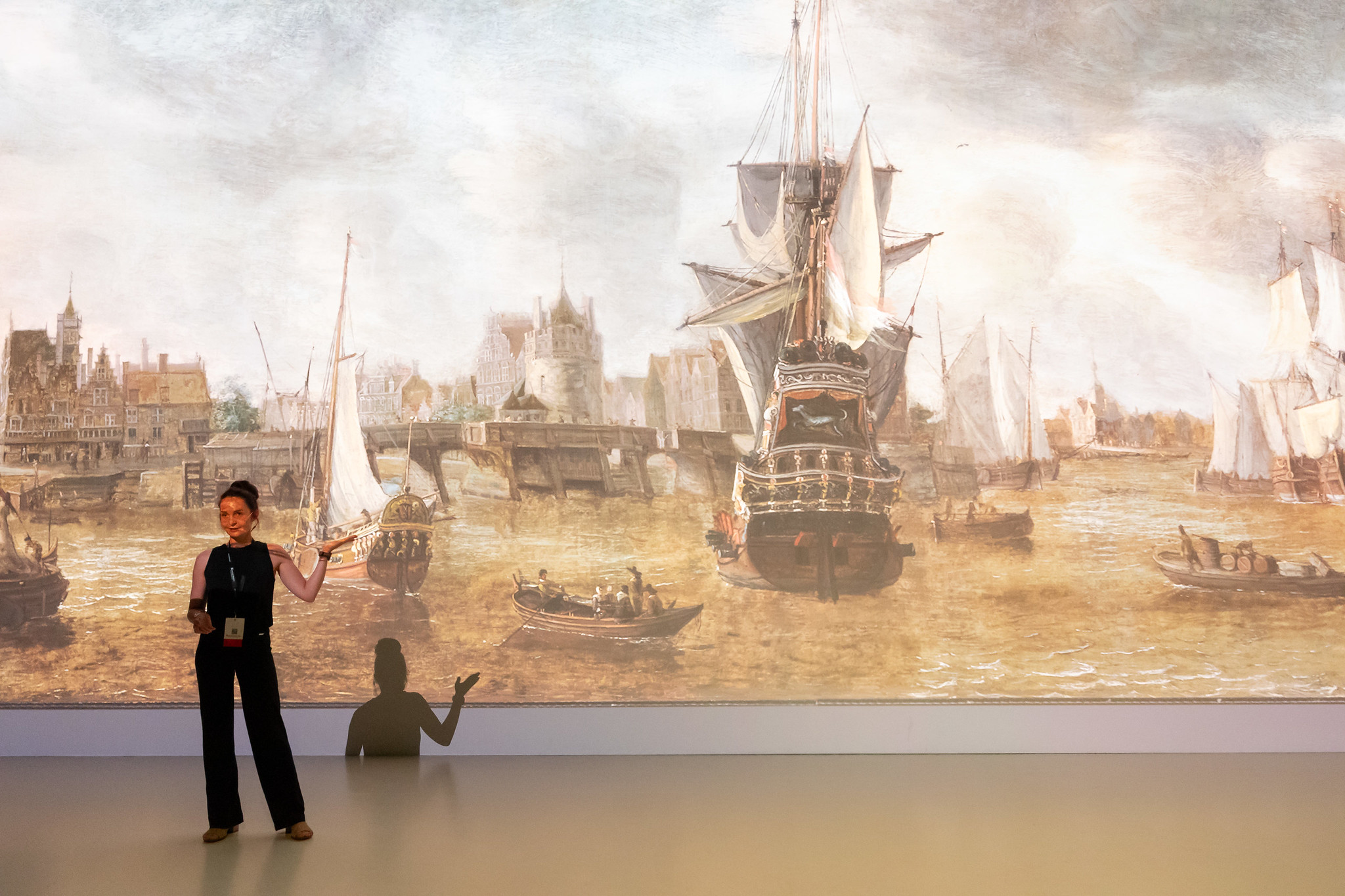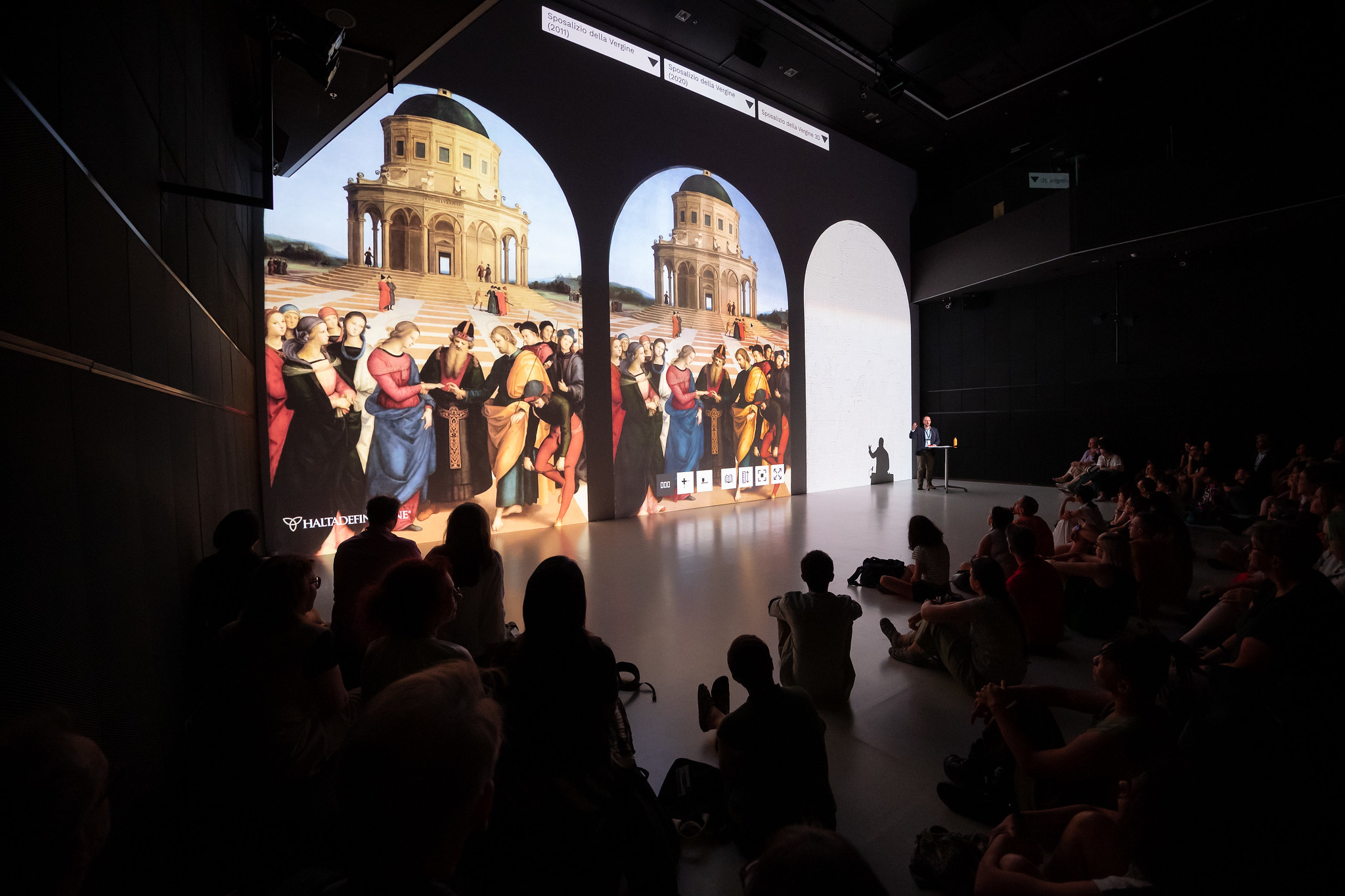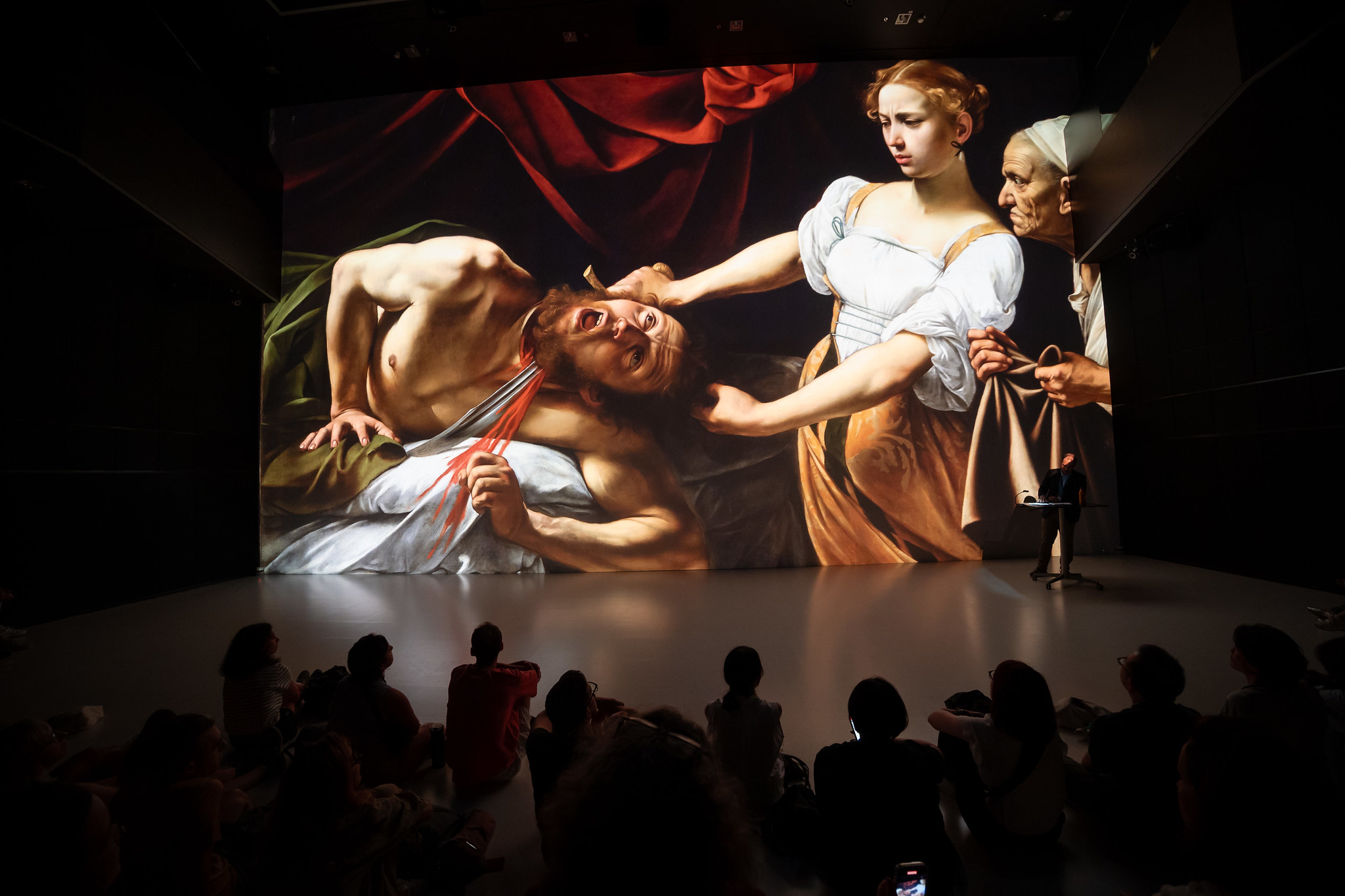Fly through the gigantic three-dimensional point cloud of Notre-Dame de Paris, learn all about the elaborate restoration of Vittore Carpaccio’s Young Knight in a Landscape, or get to know the innovative pictorial compositions of the Flemish master Pieter Claesz – as part of Ars Electronica 2024, Deep Space 8K once again became an immersive showcase for art and cultural treasures.
Ars Electronica x Cultural Heritage delivered what it promised: an impressive, immersive experience of world-famous art and cultural treasures. With this picture gallery, we would like to take you back to the venerable cathedral of Notre-Dame de Paris, show you the meticulous restoration of Vittore Carpaccio’s Young Knight in a Landscape, and dedicate ourselves to the compositions of the Flemish still life master Pieter Claesz.
Once again, we would like to thank all those who have made this possible – our colleagues at Iconem, Histovery, the Museo Nacional Thyssen-Bornemisza and the Kaiserschild Foundation, the Institut français d’Autriche, the Spanish Embassy in Vienna, the Dorotheum and the Province of Upper Austria.
Notre-Dame Immersive
After the devastating fire in 2019, Notre Dame rose from the ashes in the form of an immersive experience. In collaboration with French start-ups Iconem and Histovery, the Ars Electronica Futurelab transported the cathedral into 8K space. Visitors were able to explore a giant 3D model and discover architecture and works of art from new perspectives. The role of new technologies in preserving our cultural heritage was highlighted.
Carpaccio’s Knight – Restoration and Technical Study
Restoring a painting such as The Young Knight in a Landscape (c. 1505) by Vittore Carpaccio is a mammoth project. Susana Pérez and Alejandra Martos from the Museo Nacional Thyssen-Bornemisza, Madrid, explained the extensive technical studies and laboratory analyses required to learn more about the artist’s painting process and materials before restoration could even begin.
Kaiserschild Art Defined – Pieter Claesz Still Lifes
Pieter Claesz, one of the most famous still life painters of all time, had a decisive influence on the genre in the 17th century. In its current production, the Kaiserschild Art Defined project of the Kaiserschild Foundation focuses on the work of Pieter Claesz. High-quality digitisations of selected Claesz paintings were used to explain aspects of the works and their historical context.
With the Kaiserschild Art Defined project, the Kaiserschild Foundation is making fine art accessible to the public through high-quality digital reproductions. Selected works from Claesz’s oeuvre have been digitised in high resolution to provide an in-depth insight into painting technique, structure and materials. Sandra Sonnleitner and Stefan Albl also shed light on the historical contexts and influences to which Pieter Claesz was exposed, as well as the impact of his work.
Haltadefinizione’s Journey
Luca Ponzio and Francesco Gavioli showcased Haltadefinizione’s pioneering work in the preservation and enhancement of cultural heritage through gigapixel photography. Since 2005, the company has led innovative digitisation projects, including the world’s first gigapixel image of a work of art and extraordinary projects such as The Last Supper, the Scrovegni Chapel and masterpieces by Botticelli, Caravaggio and Leonardo.
The presentation underlined the importance of preserving cultural heritage through digital technologies, thereby democratising access to art.
You can read more about Ars Electronica x Cultural Heritage, since when, how and with whom we turn art and cultural treasures into an immersive experience, here. You can also find numerous impressions on our Flickr account.

